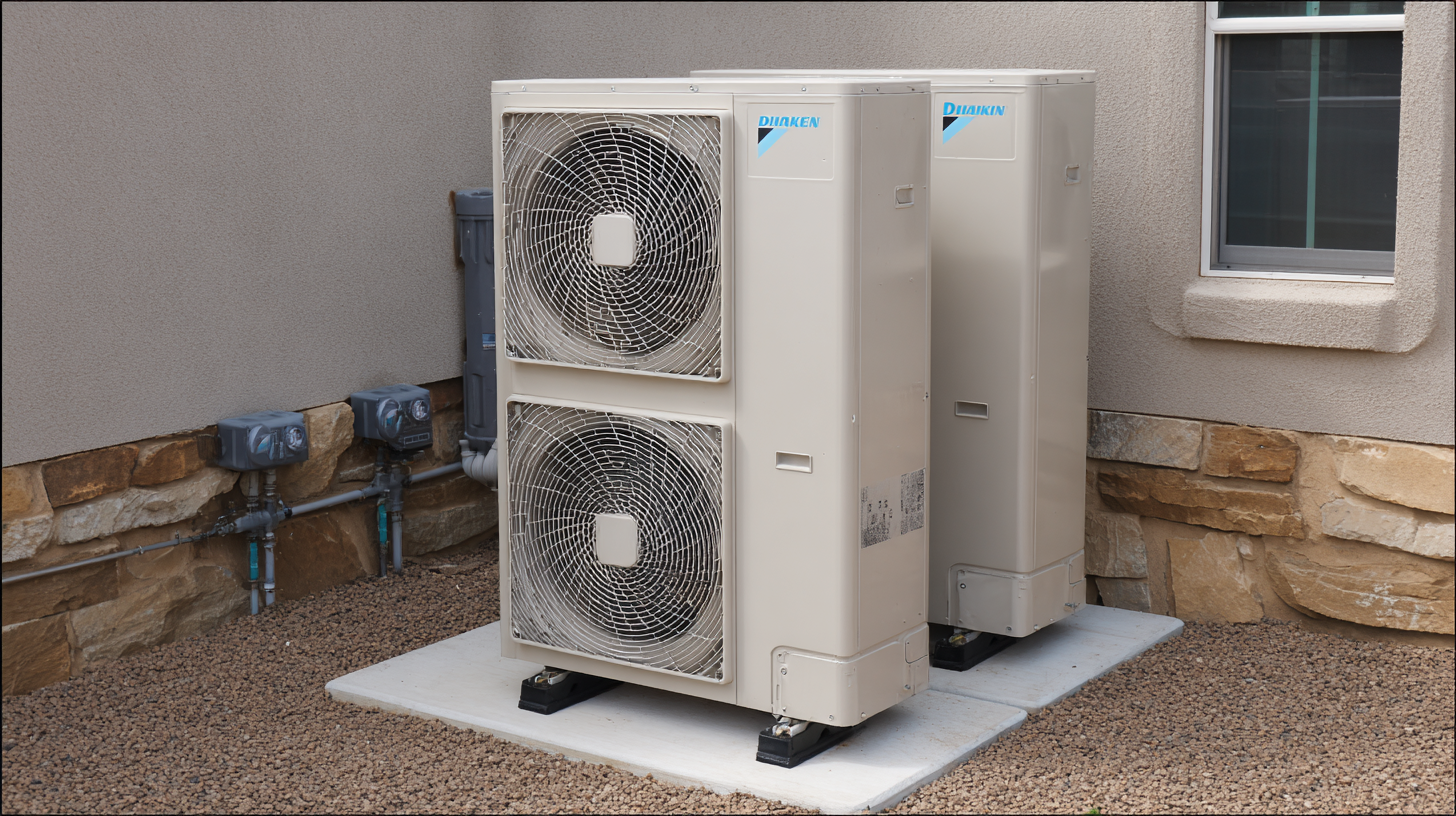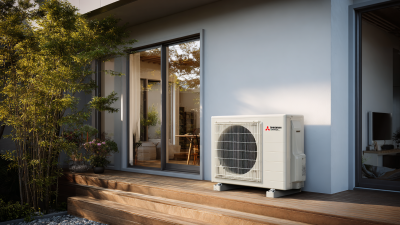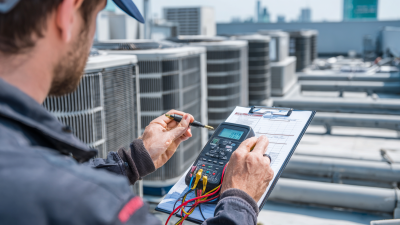Exploring the Efficiency of Ductless Heating and Cooling Units: A Comprehensive Guide to Energy Savings and Comfort
In today’s quest for both comfort and energy efficiency, ductless heating and cooling units have emerged as a compelling solution for homeowners seeking to optimize their indoor environments. These innovative systems provide an array of benefits, including significant energy savings, flexible installation options, and enhanced temperature control. As traditional HVAC systems become increasingly scrutinized for their energy consumption and environmental impact, ductless units offer a more sustainable alternative that meets modern demands for efficiency.

This comprehensive guide explores how to effectively utilize ductless heating and cooling units to achieve maximum comfort while simultaneously reducing energy expenses. By delving into their operational mechanics, potential cost savings, and practical installation tips, we aim to empower homeowners with the knowledge necessary to make informed decisions about their heating and cooling needs.
Understanding Ductless Heating and Cooling Systems: Key Features and Benefits
Ductless heating and cooling systems, particularly mini-split air conditioners, have become increasingly popular due to their energy efficiency and flexibility. These systems operate without the need for ductwork, allowing for easy installation in both new builds and existing homes. One of the key features of ductless systems is their zoning capability, which enables homeowners to control the temperature in individual rooms or areas, contributing to significant energy savings. By ensuring that only occupied spaces are heated or cooled, these systems help reduce energy consumption compared to traditional HVAC systems.
In addition to their energy-efficient design, ductless systems offer numerous benefits that enhance comfort in the home. They typically operate quietly and allow for precise temperature control, providing a tailored environment for residents. The rising demand for such systems reflects their growing acceptance, with the global market projected to reach approximately USD 145.0 billion by 2026. Furthermore, various initiatives, such as the affordability programs in B.C. targeting low- and moderate-income households, emphasize the increasing accessibility of electric heat pumps, making comfort and energy efficiency attainable for a wider audience.
Exploring the Efficiency of Ductless Heating and Cooling Units: A Comprehensive Guide to Energy Savings and Comfort
| Feature | Description | Energy Savings (%) | Comfort Level (Scale 1-10) | Installation Cost ($) |
|---|---|---|---|---|
| Energy Efficiency | High SEER ratings for cooling and HSPF for heating | 20-30% | 9 | 2000 - 5000 |
| Zoning Capability | Individual temperature control for different areas | Up to 25% | 8 | 1500 - 3500 |
| Environmental Impact | Lower carbon footprint compared to traditional systems | 15-20% | 7 | 2500 - 4500 |
| Noise Levels | Quieter operation compared to traditional units | N/A | 9 | N/A |
| Maintenance | Simple and easy maintenance requirements | N/A | 8 | N/A |
Comparative Analysis of Energy Efficiency in Ductless Units Versus Traditional Systems
Ductless heating and cooling units, commonly known as mini-splits, are gaining attention as an energy-efficient alternative to traditional HVAC systems. One significant advantage of ductless systems is their ability to condition specific areas of a home without the need for ductwork. This not only maximizes energy savings by reducing air leakage but also allows for customized comfort in individual rooms. In contrast, traditional central air systems cool or heat entire spaces uniformly, which can lead to wasted energy in unoccupied areas.
When comparing energy efficiency between ductless units and traditional systems, ductless options often outperform their counterparts. With variable-speed technology, these units can adjust their output based on the current demand, leading to considerable savings on energy bills. Homeowners interested in upgrading their HVAC systems might consider the installation of ductless units as a long-term investment that pays off through lower utility costs and increased comfort.
**Tips:** To maximize the efficiency of ductless units, ensure that the outdoor unit is installed in a shaded location to prevent overheating during hot months. Additionally, regular maintenance, such as cleaning filters and checking for leaks, can significantly enhance system performance. For those considering installation, consulting with a professional to assess home layout and potential energy savings can lead to more informed decisions.
Maximizing Comfort: How Ductless Systems Optimize Home Temperature Control
Ductless heating and cooling systems provide an innovative solution to home temperature control, enhancing comfort while maximizing energy efficiency. By utilizing individual units placed throughout the home, these systems eliminate the need for extensive ductwork, allowing for tailored climate management in each room. Homeowners can easily adjust temperatures based on personal preferences, ensuring that no area is left too hot or too cold. This flexibility is particularly beneficial for multi-level homes or spaces frequently used for different purposes.
Moreover, ductless systems utilize advanced inverter technology, which maintains consistent temperatures by adjusting compressor speeds based on real-time conditions. This not only reduces energy consumption but also minimizes temperature fluctuations that can lead to discomfort. With zoning capabilities, residents can maintain different settings in different areas of their homes, providing a customized atmosphere for everyone. As such, ductless heating and cooling units are not just about energy savings; they represent a significant leap towards achieving ideal indoor comfort year-round.
Cost-Effectiveness of Ductless Heating and Cooling: A Long-Term Investment
 Ductless heating and cooling units have emerged as a cost-effective solution for homeowners seeking to optimize energy efficiency while maximizing comfort. According to the U.S. Department of Energy, ductless mini-split systems can be up to 30% more efficient than traditional HVAC systems, translating into significant savings on energy bills. When installed correctly, these systems allow for zoning, meaning different rooms can be heated or cooled according to individual preferences. This targeted approach not only enhances comfort but also minimizes energy wastage.
Ductless heating and cooling units have emerged as a cost-effective solution for homeowners seeking to optimize energy efficiency while maximizing comfort. According to the U.S. Department of Energy, ductless mini-split systems can be up to 30% more efficient than traditional HVAC systems, translating into significant savings on energy bills. When installed correctly, these systems allow for zoning, meaning different rooms can be heated or cooled according to individual preferences. This targeted approach not only enhances comfort but also minimizes energy wastage.
Long-term investment in ductless systems is further justified by their durability and lower maintenance costs. The Air Conditioning, Heating, and Refrigeration Institute (AHRI) reports that ductless units typically have a lifespan of 20 years or more when properly maintained. Additionally, the initial installation cost can often be offset by energy savings within just a few years. Homeowners can realize return on investment (ROI) through reduced utility expenses, making ductless heating and cooling a prudent choice for those looking to balance upfront costs with long-term efficiency.
Installing Ductless Units: Considerations for Homeowners and Energy Savings
When considering the installation of ductless heating and cooling units, homeowners must assess several crucial factors to maximize energy savings and comfort. One primary consideration is the size of the home and the specific heating and cooling requirements of each room. Ductless systems are available in varying capacities, and selecting the right size ensures efficient operation. An oversized unit may cycle on and off too frequently, wasting energy, while an undersized unit can struggle to maintain the desired temperature, leading to discomfort.

Another essential aspect is the placement of indoor units. Strategically positioning these units can improve airflow and enhance overall efficiency. Homeowners should evaluate the layout of their living spaces, taking into account any obstructions that might impede airflow. Additionally, installing units in rooms that are frequently used can lead to better energy management and lower utility bills. Finally, regular maintenance and consideration of advanced features, such as programmable thermostats, can further enhance energy savings and comfort, making ductless systems a smart choice for modern homes.


